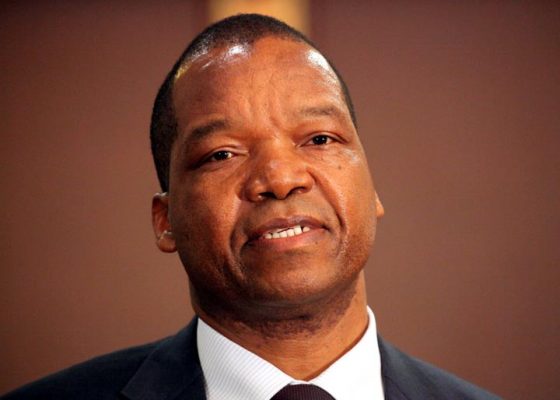The requirements for the management of tailings facilities in Zimbabwe

Following the much-publicised 2019 Brumadinho tailings dam disaster in Brazil, where a tailings facility collapsed releasing 11.7 million cubic metres of toxic mud and killing more than 200 people according to BBC reports; the management of tailings storage facilities, (“TSFs”) has come under increasing international scrutiny.
By Methembeni Moyo
The Investor Mining and Tailings Safety Initiative prompted by the Brumadinho disaster set in motion a global tailings review by the International Council on Mining and Metals (ICMM), the United Nations Environment Programme (UNEP) and the Principles for Responsible Investment (PRI), to ensure the adoption of global best practices on TSFs and to establish an international best standard. Zimbabwe is no exception. Zimbabwean miners, especially major miners, will be expected going forward to adhere to and implement international best practices and ensure that TSFs are managed in a way that will ensure the safety of mine workers, communities, and the environment. Indeed, some of Zimbabwe’s mines were part of the global tailings review carried out in 2019. Zimbabwe’s mine safety and environmental management laws are not as sophisticated and up to date with international norms and standards with regards to TSF management as other jurisdictions. However, even within the current legal and regulatory framework, Zimbabwe’s mine safety laws do provide for the management of TSFs and importantly also provide an opportunity for miners to implement their own rules which may be at par with international best practice.
In this article, I discuss the TSF safety and management requirements in terms of the Mining (Management and Safety) Regulations, Statutory Instruments 109 of 1990, (the “Mining Safety Regulations”) and the scope for mining companies to make their own TSF management rules that will pass international muster.
TSF management in terms of the Mining Safety Regulations
Section 25(1) of the Mine Safety Regulations requires that every TSF be constructed under the supervision of a competent person and in such a manner as not to endanger life or limb or to cause damage to property and be provided with an adequate penstock, spillway or some other suitable installation.
A competent person is described in section 1 as a person who has had adequate training and experience to enable him to perform the required duty or function without causing avoidable danger to himself or any other person. Section 25(2) requires a competent person to inspect a TSF every three days to ensure that there is no danger of breach or collapse. Section 25(3) requires any foreseen possibilities of breach or collapse to be reported to the mine manager and appropriate action to minimize the effect of a potential breach or collapse to be taken immediately. All inspections and reports made with regards to the management of TSFs, in terms of section 25(4) are required to be recorded and countersigned for by an official of the mine every seven days. Sections 26 and 27 reiterate the requirement for TSFs to be properly designed, constructed, and maintained. These sections further require miners to make modifications, additions, or alterations to TSFs where necessary to ensure TSF structural integrity and to take precautions against flooding.
Can miners do more?
In light of the growing global scrutiny of TSFs and the development of international best practices, what can Zimbabwean miners do to ensure that its mines are compliant with both local laws and international standards?
The Mining Safety Regulations allow for a mechanism whereby miners can make additional management and safety rules and ensure that those rules have the same force of law as the regulations themselves. Section 10(1) of the Mining Safety Regulations states that If a mine manager wishes special rules not inconsistent with the regulations, made by him for the maintenance of order and discipline and the prevention of accidents at such mine, to have the same force and effect as the regulations, the mine manager shall send such rules through an inspector or the Chief Government Mining Engineer who shall submit them to the Minister of Mines and Mining Development, (the “Minister”) for his approval.
Section 10(2) states that If the Minister approves the special rules submitted to him, the manager concerned shall be notified accordingly and the rules may then be posted up in a conspicuous place and shall take effect after they have been so posted up for fourteen clear days. Sections 10(3) and 10(4) provide for the mechanism for the rejection by the Minister or the objection to the special rules by an interested party. In terms of section 10(5), when, and as long as, special rules made in terms of section 10 of the Mining Safety Regulations are posted up as required, they shall until they are revoked or altered by the Minister, have the same force and effect as the Mining Safety Regulations and any person who contravenes or fails to comply with such rules shall be guilty of an offence and liable to the penalties specified in the Mining Safety Regulations. Accordingly, in terms of section 10 of the Mining Safety Regulations, miners have the option to make special rules with regards to the maintenance and monitoring of TSFs which will have the same force of law as the regulations. Should miners feel that the Mine Safety Regulations are inadequate, they may implement additional rules and further ensure that such rules have the legal force of regulations.
Conclusion
Notwithstanding that Zimbabwean mining safety laws are not regularly updated, the Mining Safety Regulations provide an opportunity for Zimbabwean miners, particularly those with significant TSF exposure, to make special rules with regards to the monitoring and maintenance of TSFs. Making special rules gives miners the peace of mind that employees will respect any additional rules with regards to TSF management with the same reverence as they would the regulations themselves. Secondly, by implementing special TSF management rules, should a TSF failure occur, the miner can show that it took every step necessary to be compliant and even went a step further by ensuring that international standards were used at the mine by implementing special rules that are as legally binding as the regulations. Ultimately, miners have to consider whether the cost and administrative drawbacks of further regulation by using the special rules mechanism is necessary to minimize the risk of a TSF failure occurring, and to mitigate the liability of the mine should a TSF failure occur.
You can get in touch with Methembeni Moyo on [email protected]


